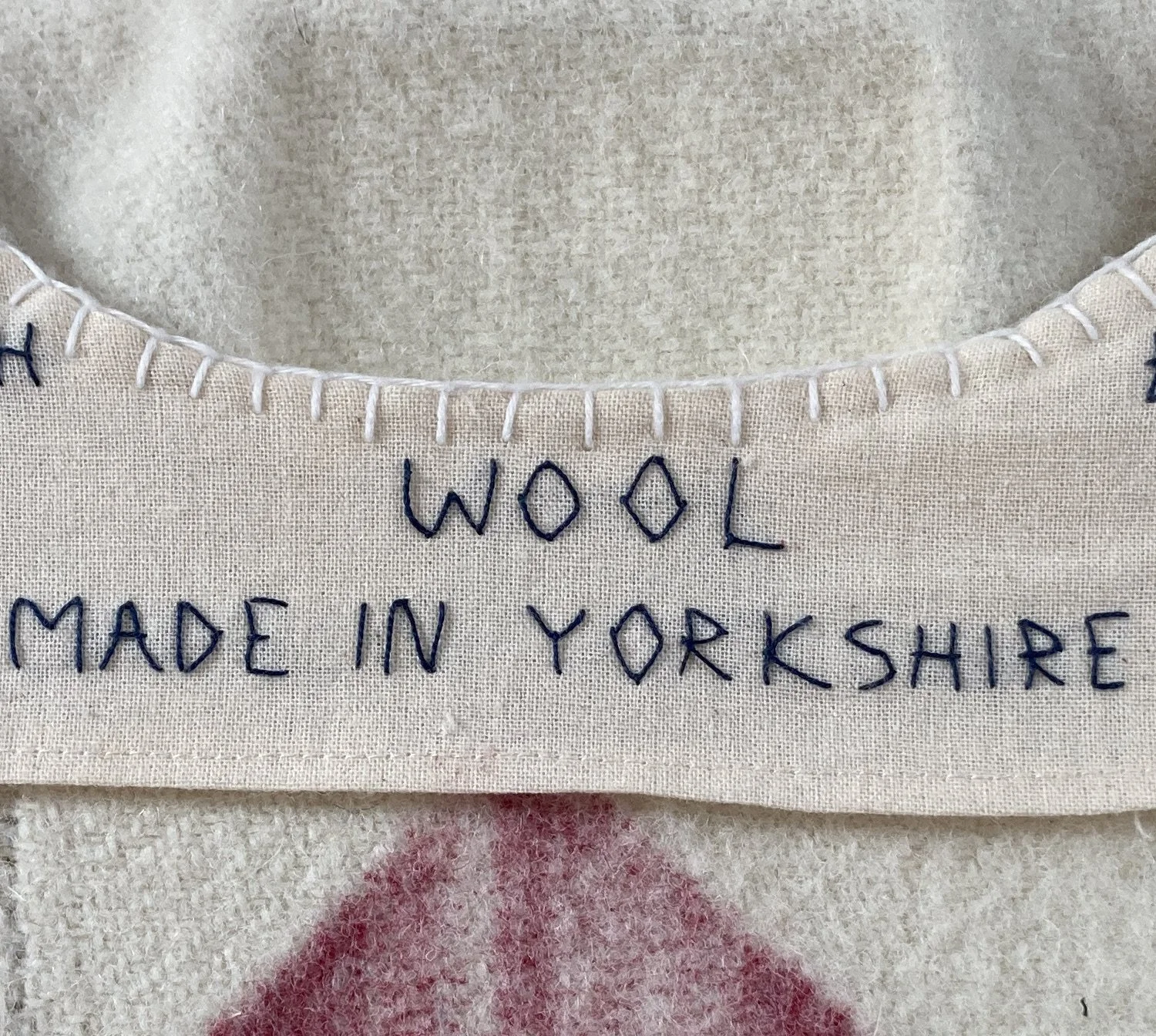WasteAge Coat
This series of blog posts have been all about my textile project at Bradford School of Art. Our brief was to reimagine industrial waste materials into high-end desirable designs. AW Hainsworth, a Yorkshire-based textile manufacturer supported the project by providing pre-consumer waste materials.
This weekend is the culmination of that work, there are eight students in our group and we have each made a quite different response to that brief. It has been exciting to see everyone’s work, after only seeing glimpses online until now. Today we had a fashion shoot, where the College Photographer, Anna, took lots of shots of our work, it was really interesting to watch a professional photographer at work.
Bradford School of Art photographer Anna, with model Eleanor
The coat draws on the design of Susan Briscoe’s Hanten Jacket in the book of boro (Briscoe, 2020). The design of the coat uses five rectangles of cloth, and with minimal shaping there is very little waste. The rectangles were mostly constructed from the blanket material which is inevitable waste from the weaving and fulling process. The black lines are markers that is woven into the blanket. Blankets are joined together in a large loop prior to being fulled. The strips I used were pieces about 40 cm wide around the join, which I dismantled before rejoining..
Photograph: Anna Kornatovska, Bradford School of Art
The front right panel is based on the pattern made by the heddles on a loom as they rise and fall, I described the process of designing this in an earlier post, From abstraction to action. I am really pleased with how they look on the coat.
Photograph: Anna Kornatovska, Bradford School of Art
The design for the back of the coat draws on the Kent Military Uniform Coverlet I wrote about in Textiles Heritage . Small 2 inch squares were needle-felted to the fabric using an embellisher machine. This was my first experience of using the machine, and I learned a lot along the way. I wanted to achieve the ‘double sided’ fabric that you can see in these images – there is a more subtle ‘water colour’ look to the inside of the back of the coat, contrasting with the bright sharp squares on the back.
Unfortunately, one of the fabrics I chose to use is rather frail for this approach and has not stood up well to the battering the coat has had in getting it through my machine to stitch the side seams and sleeves. This was a rookie error, not enough trialling of all my materials. However, it is a pleasing effect and the small blemishes can be remedied.
So I have produced a coat that demonstrates that one mill’s waste is another woman’s useful fabric – and all within 30 miles of where the wool was spun and woven.
References
Briscoe, S. (2020) the book of boro. Exeter: David and Charles.
A W Hainsworth https://www.hainsworth.co.uk/
















